Mini’s electric ace up its sleeve: the new Aceman EV has a range of 400 kilometers, but the price tag is not mini
The new Mini Aceman is coming soon to roads near you to fill the gap in crossover-sized electric vehicle (EV) vehicles in BMW’s range, between the Cooper supermini and the Countryman SUV.
Mini’s latest electric offering – the Aceman – was unveiled at the Beijing International Automotive Exhibition this week – and the British brand has confirmed it will be produced in China alongside the new Cooper.
And the price tag will be far from mini.
It will come in from just over £31,000 and UK deliveries will take place in the autumn.
The all-new Mini Aceman EV was unveiled today at the Beijing International Automotive Exhibition. Deliveries will begin in the autumn and the entry-level variant for this city car starts from £31,220
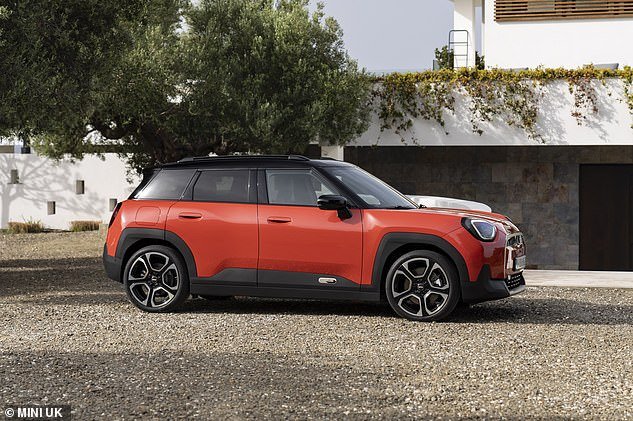
It takes styling cues from the Cooper and Countryman, with the front of the Cooper and the hips of the Countryman, with the classic Mini face that is so recognizable
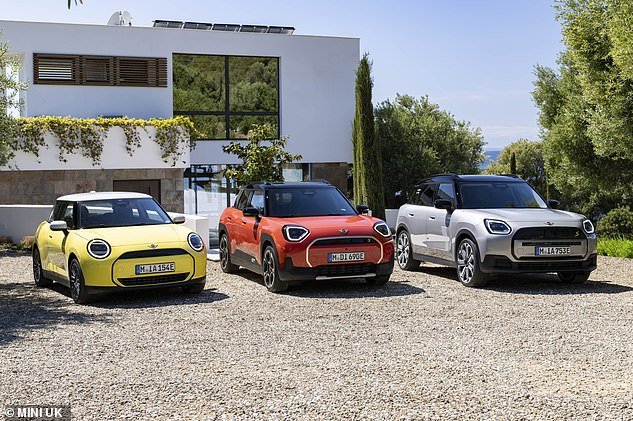
The electric crossover will sit between the smaller Cooper (left) and the Countryman SUV (right), completing Mini’s electric range
The Aceman will be larger than the supermini three-door Cooper, but smaller than the surprisingly large Countryman.
It is 4.07 meters long, 1.75 meters wide and 1.5 meters high – about the same as the Jeep Avenger and Renault Clio, but smaller than the Volvo EX30 – and comes with five seats and five doors.
Typical Mini design elements include the expressive angular headlights and grille, the flowing Cooper curves at the front, the Countryman’s sturdy flanks and the floating roofline.
It looks more like the Countryman than the Cooper and delivers the crossover styling that is so popular with manufacturers and buyers alike today.
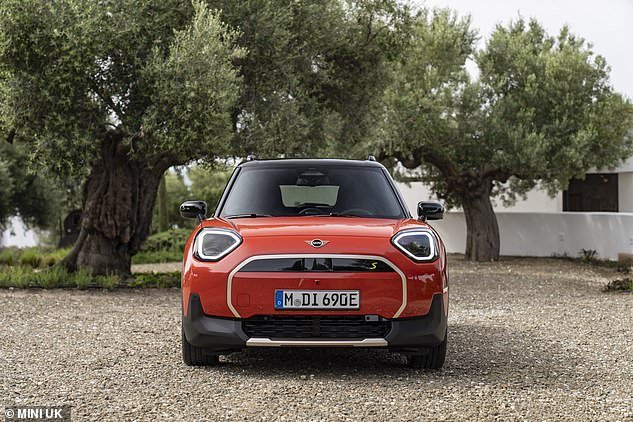
The Aceman is about the same size as the Jeep Avenger and the Renault Clio, and is Mini’s first electric crossover
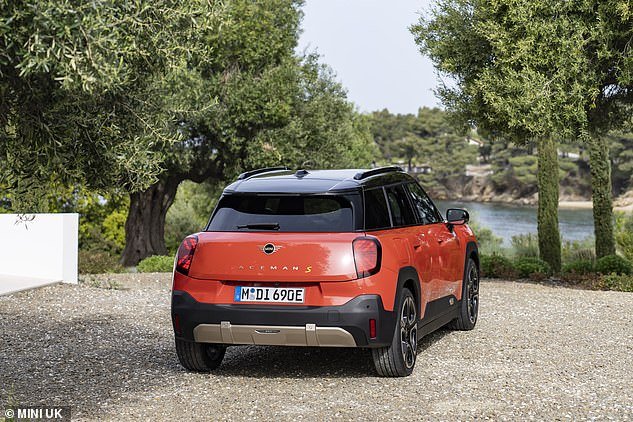
There will be two versions of the Aceman available when it goes on sale later this year: the entry-level Aceman E and the more powerful Aceman SE
Inside, it’s also very similar to Mini’s other recent EV reveals, with the new (and world-first) round infotainment screen with 9.4-inch OLED display taking center stage.
The cabin reportedly feels open and bright thanks to a large panoramic glass roof, and the ambient lighting can be adjusted to suit your mood.
Sustainable materials such as recycled polyester have also been used in the interior.
The toggle switches guide the infotainment system and are reminiscent of the original 1959 Mini, while there is also a central selector switch for ‘Mini Experience Modes’ which is mounted centrally below the round screen and is designed to look like the ignition switch from the classic Mini .
But instead of starting this EV, the controller adjusts eight different modes that change the interior lighting scheme and electric sound effects to customize the driving experience.
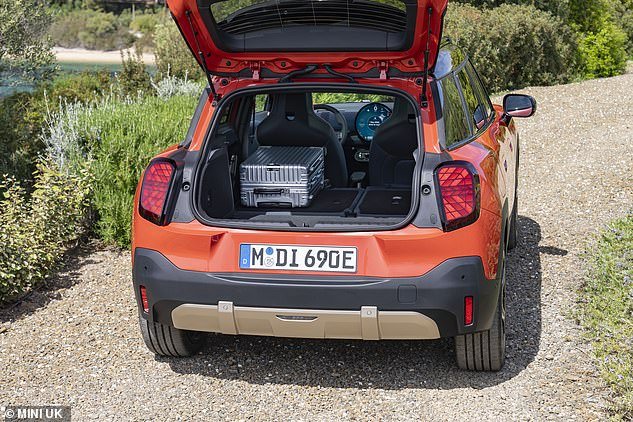
You get 300 liters with all the seats up, and 1,005 liters with the rear seats folded. The rear seat is also split 60:40 for added versatility
The Aceman should be more versatile and practical than the Cooper – with the extra 20cm of length put to good use to increase boot space.
You get 300 liters of luggage space with the rear seat backs upright, and 1,005 liters when they’re folded flat. The rear seat is split 60:40.
There will be two versions of the Aceman available when it goes on sale later this year: an entry-level Aceman E and a more powerful Aceman SE.
The Aceman E has a front-mounted engine that produces 181 hp and accelerates from 0 to 100 km/h in 7.9 seconds.
Top speed will be 160 km/h – after all, it is intended as a city car.
The 24.5 kWh battery has a usable range for city driving of 190 miles (enough for a week and a half of driving, based on the UK daily average of 20 miles), and you can charge up to 75 kW.
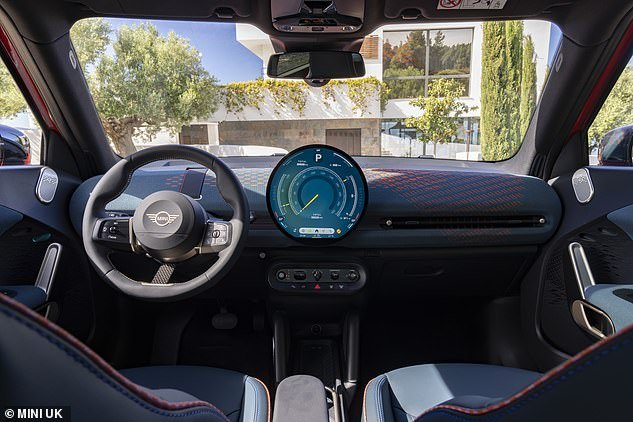
The interior is a follow-up to the new Cooper and Countryman: it is made from recycled materials and has the special round 9.4-inch infotainment screen as its centerpiece
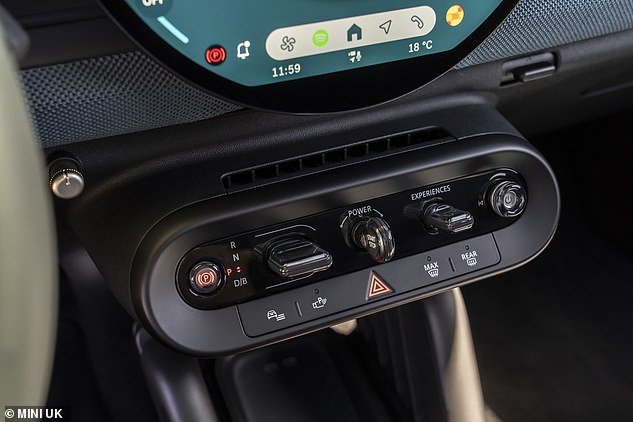
Mini hasn’t done away with buttons, though, as the Aceman still has switches and an ‘Experience Mode’ selector that lets you switch between eight ambient light and sound modes
The SE will use a 215 hp engine, reach 100 km/h from a standstill in 7.1 seconds and reach a top speed of 170 km/h.
The larger 54.2 kWh battery should be able to travel 400 kilometers on a single charge, and can quickly charge up to 95 kW.
There’s also a John Cooper Works (JCW) Aceman in the pipeline, which will use the SE’s drivetrain but come with the more sporty racer tuning you’d expect from a JCW.
The Aceman E costs from £31,220, and the SE from £35,720. Three equipment levels are offered for both versions: Classic, Exclusive and Sport.
And good news for the British car industry:
Mini bosses confirm it will move Aceman assembly to the Oxford plant from 2026, where BMW is injecting £600 million to upgrade EV production, securing 4,000 jobs.

Some links in this article may be affiliate links. If you click on it, we may earn a small commission. That helps us fund This Is Money and keep it free to use. We do not write articles to promote products. We do not allow a commercial relationship to compromise our editorial independence.
